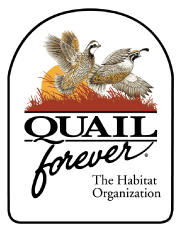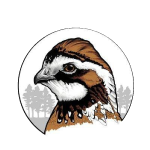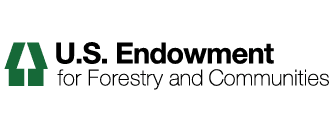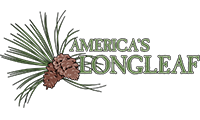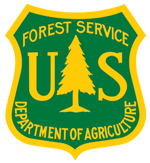NRCS Conservation Practices and Materials
Overiew of LCC National Council Recruitment Process
The purpose of this overview is to familiarize the LCC Coordinators Team (LCT) with the recruitment process for the LCC National Council (Council), to identify the role the LCC coordinators will play in the process, and to provide you with some talking points for explaining the process to your respective organizations and other networks.
Native Plants Boost Conservation Benefits, Strengthen Wildlife Populations
Native plants in many parts of the U.S. are struggling because of changes in land use and climate, posing problems for the wildlife species that depend on them for sustenance and sanctuary.
USDA, Interior and Defense departments partner to benefit agricultural lands, wildlife habitat and military readiness
Agriculture Secretary Tom Vilsack, Interior Secretary Sally Jewell and Defense Acting Deputy Under Secretary for Installations and Environment John Conger announced today a federal, local and private collaboration that will preserve agricultural lands, assist with military readiness and restore and protect wildlife habitat.
Agenda for Roundtable Discussion on Future of Federal Collaboration in Landscape-Scale Planning
Here is the full agenda to the meeting that is initializing a conversation about the future of federal agency collaboration in landscape-scale planning.
New Online Tool Helps Producers Estimate Carbon Stowed in Soil
A new online tool , called COMET-FARM™, enables agricultural producers to calculate how much carbon their conservation actions can remove from the atmosphere.
NRCS, Landowners Improve Habitat for At-risk Species
Through voluntary conservation, American farmers, ranchers and forestland owners are restoring and protecting habitat for seven at-risk wildlife species.
Wetland restorations offer environmental, economic benefits
Scientists with USDA’s Natural Resources Conservation Service recognize the environmental and economic benefits regional wetlands provide and the importance of preserving wetland resources.
Wetlands clean water, provide homes for wildlife across the nation
Wetlands play a crucial role in the world’s ecosystem by protecting and improving water quality, filtering surface water, storing floodwater and creating or enhancing wildlife habitat.
NRCS helps build resiliency to climate change
As experts predict growing climate changes in the United States, the USDA’s Natural Resources Conservation Service offers a variety of practices, programs and studies that help landowners build resiliency to its effects.
Nature Serve Terrestrial Habitat Classification
ECOLOGICAL SYSTEMS OF THE UNITED STATES A WORKING CLASSIFICATION OF U.S. TERRESTRIAL SYSTEMS
National Fish, Wildlife, & Plants Climate Adaptation Strategy
The purpose of the National Fish, Wildlife and Plants Climate Adaptation Strategy is to inspire and enable natural resource administrators, elected officials, and other decision makers to take action to adapt to a changing climate. Adaptation actions are vital to sustaining the nation’s ecosystems and natural resources — as well as the human uses and values that the natural world provides.
Maryland SHC Plan
The Chesapeake Bay Field Office is actively involved in conservation and restoration activities in the Chesapeake Bay watershed with most of these activities occurring in Maryland, Delaware, and the District of Columbia. However, our close proximity to the Environmental Protection Agency’s (EPA) Chesapeake Bay Program involves us taking a lead role in dealing with watershed wide issues. We have been actively engaged in the Environmental Protection Agency’s (EPA) Chesapeake Bay Program since its inception in 1983. Over the years we have provided leadership on fish passage, oysters, stream restoration, toxics, invasive species, wetlands, and SAV. Most recently, we are providing leadership on the Habitat Goal Implementation Team, and have provided substantial input to develop a renewed federal strategy for restoring the Chesapeake Bay as part of the Chesapeake Bay Executive Order that President Obama signed in May 2009. We will be responsible for implementing many of the actions identified in the Habitat and Living Resource 202(g) report.
New York and Long Island Plan
The New York and Long Island Field Offices have developed a strategic plan for our future work. This plan provides the direction of our field offices’ work and allows us to clearly articulate to others what our goals are and why. Our plan was developed using the Strategic Habitat Conservation approach (SHC). The SHC approach is an adaptive management methodology with 4 identifiable phases – biological planning, conservation design, conservation implementation, and monitoring. You will see that our strategic plan reflects this process in its construction.
Pennsylvania Ecological Services Plan
The Pennsylvania Ecological Services Field Office (PAFO) of the U.S. Fish and Wildlife Service (FWS) has developed this Priority Planning Strategy to guide its work over the next three fiscal years. This Strategy will be shared with other conservation partners, both within the FWS (e.g. other field stations in Pennsylvania, as well as neighboring Field Offices), and outside of the FWS (state wildlife agencies, federal agencies, conservation organizations, and others). Based on conversations with partners at all levels, and depending upon changing resources, information, or rates of progress, the Strategy will be subject to ongoing review and revision.
West Virginia Ecological Services Plan
With the mission of the U. S. Fish and Wildlife Service in mind the Service’s West Virginia Field Office (WVFO), Elkins, West Virginia, has developed a multi-year comprehensive strategic priority plan for West Virginia to be utilized in conjunction with the Service’s Washington and Region 5 offices’ guiding parameters articulated under the Vision, Conservation Principles and Priorities below. The WVFO has incorporated these parameters into our strategic priority plan, weaving our activities not only into these national and regional parameters but also into the Strategic Habitat Conservation (SHC) framework.
Virginia Ecological Services Plan
The 2010-2014 Strategic Plan's purpose is to work as one group, crossing and blurring program boundaries, to determine statewide resource priorities and a strategic approach to addressing these priorities in our daily actions, resulting in a more focused effort on specific Service priorities that will offer the largest conservation benefit.
Agenda for February 11th, 2013 ISC Call
Details meeting objectives, prioritization of the top ranked science needs, work plan research-related tasks, and close of meeting instructions.
Appalachian Mountains Joint Venture 3 Year Operational Plan
To accomplish our collective objectives, Appalachian Mountains Joint Venture (AMJV) Staff and each of the individual partners must identify and deliver their respective contribution(s) to each priority relevant to their geography, available resources, existing local partnerships, etc. Therefore, AMJV Staff and the Executive Committee have developed a DRAFT of our partnership’s 3-year Operational Plan designed to achieve our longer-term conservation goals for each priority topic stated below.
Beane_2010_WV_red spruce_climate change.pdf
environemental and site-specific variables to model current and future distribution of red spruce forest habitat in WV








